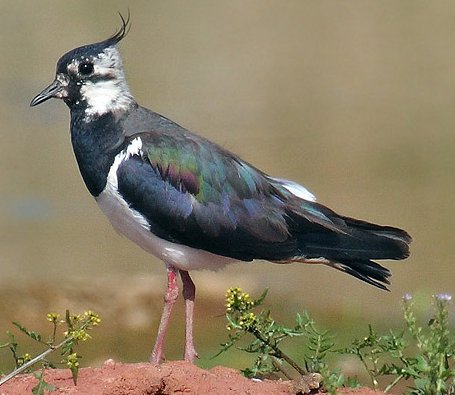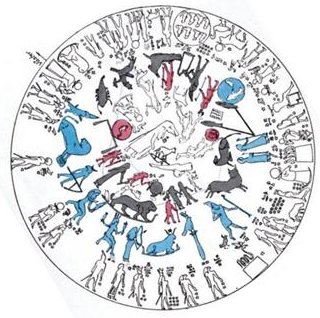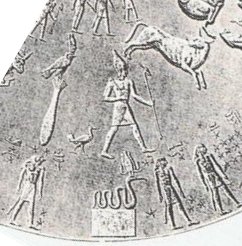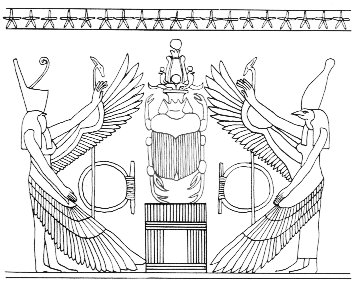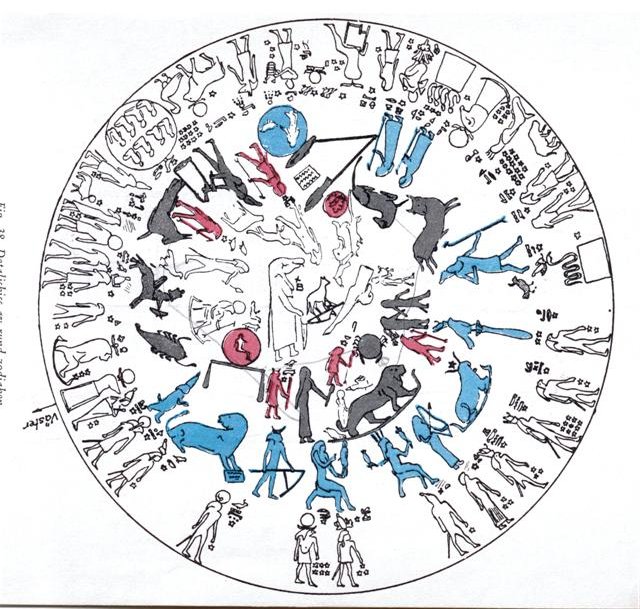Pharaoh in form of Orion wears the headdress of Upper Egypt and the 'lapwing' evidently represents Lower Egypt - from the highest to the lowest, a mirror version of Te Pei to Te Pou:
She is one of the three central characters in The White Goddess: "The Battle of the Trees was 'occasioned by a Lapwing, a White Roebuck, and a Whelp from Annwm' ..." Graves reports from his own experiences: "In Wales as a boy I learned to respect the lapwing for the wonderful way in which she camouflages and conceals her eggs in an open field from any casual passer-by. At first I was fooled every time by her agonized peewit, peewit, screamed from the contrary direction to the one in which her eggs lay, and sometimes when she realized that I was a nest-robber, she would flap about along the ground, pretending to have a broken wing and inviting capture. But as soon as I had found one nest I could find many. The lapwing's poetic meaning is 'Disguise the Secret' and it is her extraordinary discretion which gives her the claim to sanctity. According to the Koran she was the repository of King Solomon's secrets and the most intelligent of the flock of prophetic birds that attended him." So contrary to the pomp and circumstance of the great king she who hides his eggs is living close to the ground. Indeed, we can hardly see her in the Dendera round zodiac:
In the outer circle of figures we can detect what probably is a Sun Serpent upon a 'stone' below the blue pair:
The snake has 3 undulations and its head has a crown similar to that on the scarab we just saw:
The rectangle ('stone') on which the serpent is resting corresponds to the 'house' below the scarab. The secret which rechyt here hides for us could be the location of the 'door' through which in the Golden Age summer entered, i.e. when the twins (Gemini) were at spring equinox:
Above east is to the right. The blackmarked Virgo is at summer solstice and Pisces at winter solstice. Gemini can be understood as the pair of winter and summer. The two fishes in Pisces could similarly indicate a crack in time between the old and the new years (the upper one with a Sun eye and the lower one maybe like a baby hippopotamus). The great hole in e.g. *Qa2-40 could possibly indicate the 'door' from winter to summer:
Instead of *Qa1-80 (for summer solstice) - which would have been impossible because the glyph lines are not long enough - the creator of the Q text could have decided to choose day 240 counted from winter solstice as a sign, thereby also indicating that 2 months have been added. In other words, the text maybe describes the location of the great hole as it was 2 zodiacal signs earlier than Pisces, in the Golden Age. The Sun season will after an interlude (cfr the 3 threads between the 10 outer feathers and the 8 inner ones in the human rechyt figure) be followed by a Moon season. The empty single ('cyclopean') eyehole is drawn above twin eggs. Sun is high in the sky, but Moon is close to earth. On Easter Island the season of the great hole in the sky would in the Golden Age not have been spring but autumn equinox. And because of precession this location must nowadays have moved to winter solstice - given that the time of observation was the same and not had been changed from morning to evening for instance. Or maybe the time of observation was coordinated with the age of Sun - in early morning when Sun was young, at noon when Sun was in his middle age, and in the evening when Sun was old. The principle of correspondences ought to have had such a consequence, I think. In Qa3-1 a waning moon crescent evolves into a nuku sign turned upside down, which ought to mean that winter is over. In Qa3-2 the 'pitcher of darknes' has a 5-maro feather garland hanging down, which I read as 'the front side of the year is in front' and winter is in the past. Glyph number 68 draws the line. Remarkably, it was also in the 3rd of his 12 adventures that Odysseus had his ordeal with Polyphemus - not when he had advanced halfway through his cycle. There is a 'door' in toru. Also Heracles (Hercules) met Polyphemus, and - remarkably - it happened at a water hole with an abandoned water pitcher (cfr at hanau). |
